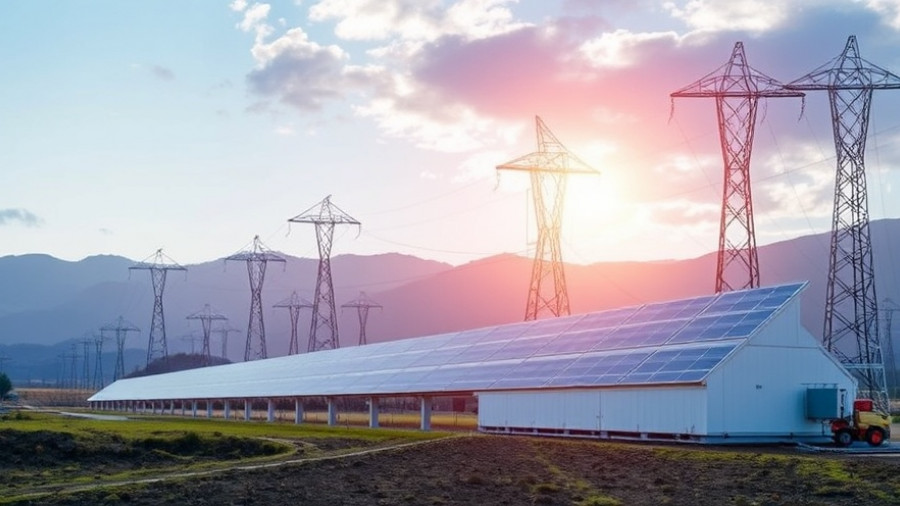
Advancements in Energy Storage Technology
The race to revolutionize energy storage is at the forefront of the green energy movement, as the demands for safety, reliability, and efficiency in power storage systems escalate. With over 4,000 energy storage projects currently in the pipeline, global interest in efficient energy storage systems (ESS) has surged. The shift towards renewable energy sources, coupled with the complexities of grid balancing, has intensified the need for innovative solutions that can meet evolving energy demands.
Exploring Safety in Battery Technologies
One of the primary challenges faced by the energy sector is ensuring the safety of energy storage solutions. High-profile incidents of battery fires have raised flags about the safety of lithium-ion (Li-ion) batteries, traditionally the dominant player in energy storage. Research institutions and companies alike are now prioritizing the development of new materials that can withstand extreme conditions, reducing risks related to overheating and fires.
Innovations such as Alsym Energy’s metal-oxide battery utilize non-flammable and non-toxic materials, providing a promising alternative to traditional Li-ion batteries. This move not only enhances safety but also expands applicability in urban regions where extreme temperatures can lead to battery failures. Companies are increasingly focused on chemistry that can resist varying environmental conditions, emphasizing the growing importance of battery safety in the energy transition.
Alternative Energy Storage Solutions: Beyond Lithium-Ion
While lithium-ion batteries hold a significant market presence, burgeoning technologies are emerging as competitive alternatives. For example, Form Energy’s iron-air battery employs simple, abundant materials capable of storing energy for extended periods, potentially lasting up to 100 hours. This broader range underscores the trend of diversifying energy storage technologies to include more sustainable and economically viable options.
As the global energy landscape evolves, other forms of energy storage are also gaining traction. The use of hydrogen as a storage solution through innovative methods such as solid-state hydrogen storage exemplifies this growth. Projects like LAVO’s patented technology showcase the potential for hydrogen storage to provide safe, long-duration energy supplies. This represents a collaborative acceptance among industry players to shift focus on safety and reliability alongside efficiency.
The Role of Energy Storage in Renewable Integration
Reliable energy storage systems are essential to maximize the full potential of renewable energy sources such as solar and wind. As highlighted in recent reports, the synergy between energy generation and storage can drastically improve grid performance and sustainability. Moreover, the development of storage systems catering to both residential and commercial sectors is experiencing exponential growth, driven by supportive policies in regions like California and Hawaii.
The concept of Energy Storage as a Service (ESaaS) is rapidly gaining momentum as investors seek economically viable energy solutions. This model integrates advanced energy management systems, facilitating affordable access to energy storage capabilities, thus demonstrating a continual shift towards reliable power solutions.
Future Prospects for Energy Storage Technologies
The future of energy storage is bright, particularly as ongoing research and development efforts yield new breakthroughs. Industry experts anticipate an increase in project financing for energy storage initiatives, incentivizing greater engagement from utility companies and investors. From improved battery lifetimes to more transparent cost metrics for energy storage solutions, the trajectory appears to lean towards enhanced efficiency and lower long-term costs.
As we navigate the evolving landscape of energy storage, organizations are keen to embrace alternative materials and innovative technologies that promote sustainability without compromising operational efficiency. This proactive approach not only addresses pressing environmental concerns but also positions businesses favorably for the future energy markets.
Conclusion: Embracing a Safer Energy Future
In summary, the path forward for energy storage technology intertwines safety, reliability, and innovative research. As battery safety concerns continue to mount, the industry is poised to adopt new technologies that not only mitigate risk but also enhance performance. By fostering a culture of innovation, the energy sector can better meet the challenges of integrating renewable resources while safeguarding community interests and the environment.
 Add Row
Add Row  Add
Add 




Write A Comment